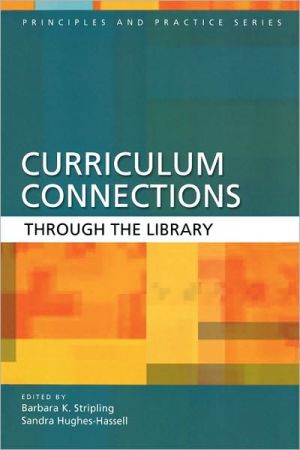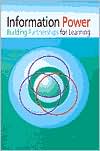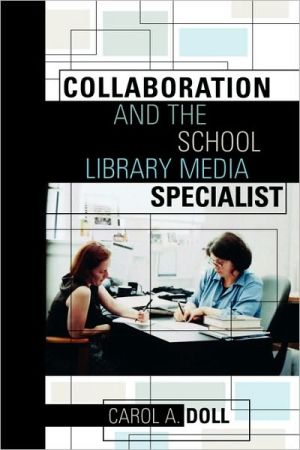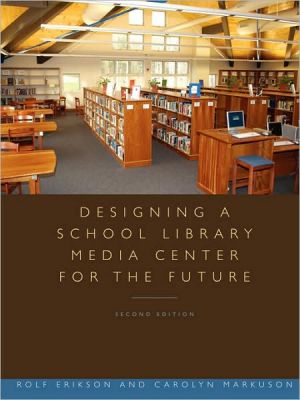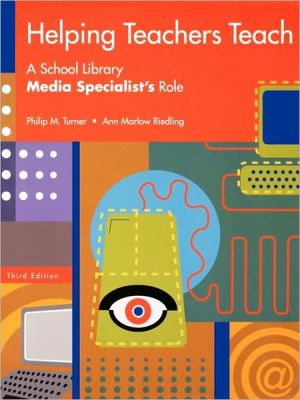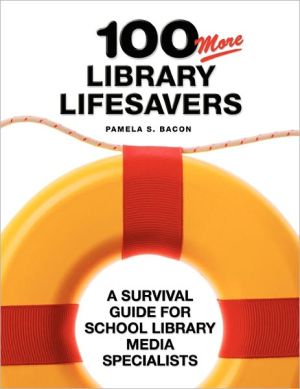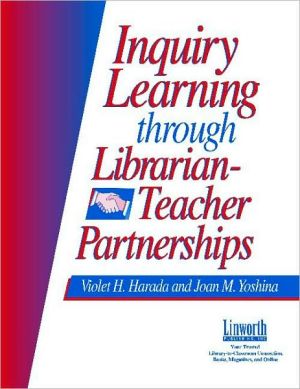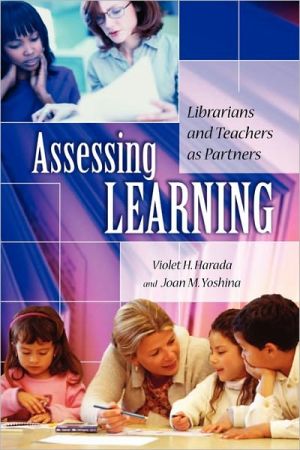Curriculum Connections Through The Library
Educators have wrestled with the delineation of "important curriculum content" for decades. What is important, and how can the school library help? Written by well-known educators and school librarians, this new work--the second in the Principles and Practice Series--explores educational principles and research, and connects national curriculum trends to current library practice. The book features eleven chapters, illustrated throughout with tables and figures. Each chapter explains major...
Search in google:
Written by well-known educators and school librarians, this book explores educational principles and research as it connects national curriculum trends to current library practice. Paula Rohrlick - KLIATT According to the editors, "The purpose of this book is twofold: to provide sound educational principles to inform practice in our schools and to illustrate examples of effective practice to inform future educational research." The chapters, written by educators and school librarians, are organized into four sections: building independent learners, mapping the curriculum, teaching and assessing, and creating collaborative learning communities. The focus is on how school library media specialists can be literacy leaders and curriculum developers, and the real-life examples help make clear how this can be accomplished. YA librarians will be particularly interested in "Promoting Young Adult Literacy: A Role for School Library Media Specialists," by Sandra Hughes-Hassell, with its helpful summary of research on YA reading and writing and implications for libraries. Suggestions include creating an inviting library space for teens, advocating for free reading time during the school day, and providing YAs with strategies for understanding texts. For library and education schools, and for practitioners as well. (Principles and Practices Series). KLIATT Codes: P—Recommended. 2003, Libraries Unltd, 230p. bibliogs. index., Ages adult.
IllustrationsAcknowledgmentsIntroduction1Inquiry-Based Learning32Empowered Learning: Fostering Thinking Across the Curriculum413Literacy Learning in the Elementary School: Implications for School Library Media Specialists674Promoting Young Adult Literacy: A Role for School Library Media Specialists895Librarian Morphs into Curriculum Developer1076Curriculum Mapping and Collection Mapping: Otherwise Known as "The Camel with Two Humps"1197Modeling Recursion in Research Process Instruction1418Assessment for Learning1579Building Learning Communities Using Technology17110The Role of Libraries in Learning Communities18911Collaboration and Leadership199Index221About the Editors and Contributors227
\ KLIATTAccording to the editors, "The purpose of this book is twofold: to provide sound educational principles to inform practice in our schools and to illustrate examples of effective practice to inform future educational research." The chapters, written by educators and school librarians, are organized into four sections: building independent learners, mapping the curriculum, teaching and assessing, and creating collaborative learning communities. The focus is on how school library media specialists can be literacy leaders and curriculum developers, and the real-life examples help make clear how this can be accomplished. YA librarians will be particularly interested in "Promoting Young Adult Literacy: A Role for School Library Media Specialists," by Sandra Hughes-Hassell, with its helpful summary of research on YA reading and writing and implications for libraries. Suggestions include creating an inviting library space for teens, advocating for free reading time during the school day, and providing YAs with strategies for understanding texts. For library and education schools, and for practitioners as well. (Principles and Practices Series). KLIATT Codes: P—Recommended. 2003, Libraries Unltd, 230p. bibliogs. index., Ages adult. \ —Paula Rohrlick\ \ \ \ \ School Library JournalThe authors of this book believe that school librarians, in collaboration with other educators, play a pivotal role in creating independent learners. They have chosen numerous, thought-provoking essays that sample existing scholarship and direct professionals in ways to affect curriculum, collections, and collaboration across disciplines and to aid students who must perform under the scrutiny of the national standards movement. The book contains some suggestions for joint projects, but primarily promotes open-ended, inquiry-based learning. It provides a realistic assessment of why collaboration and serving as a curriculum advisor can be so difficult as well as a good exploration of the motivations for teachers resisting change. The section on curriculum mapping and library-collection management will make many professionals look at resources in new ways. Although there is a bit of repetition in the first section, the writing is clear and purposeful. The well-documented essays contain a number of useful tables. For those who haven't time to regularly survey current library literature about our rapidly changing profession, this can be a useful "catch-up." It is not a cookie-cutter or how-to book, but it is every bit as informative as Stripling's Learning and Libraries in an Information Age (Libraries Unlimited, 1999). A stimulating choice for practicing librarians and students of library science.-Cindy Darling Codell, Clark Middle School, Winchester, KY Copyright 2004 Reed Business Information.\ \
